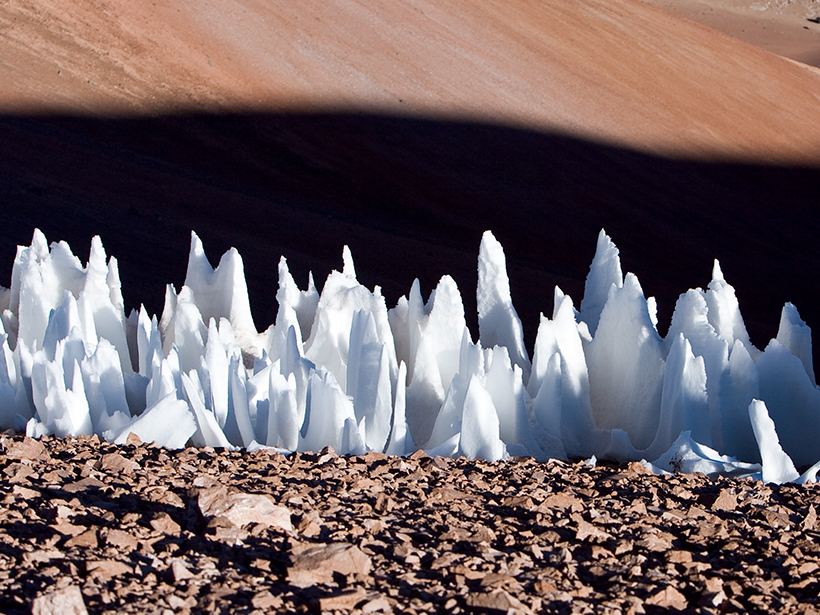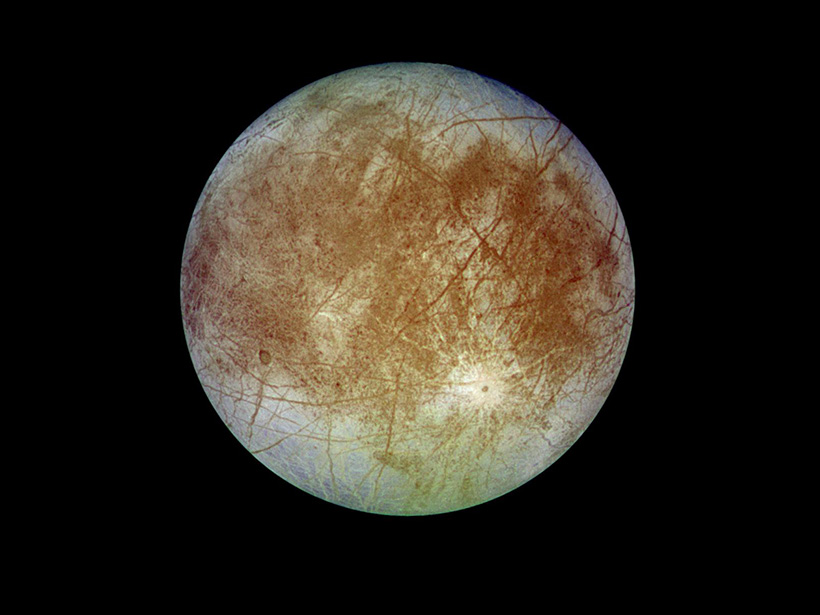If present, microbes could explain evolving patterns in the planet’s atmosphere when observed in ultraviolet light.
life as we know it
Brine Pools Emerge as a New Place to Search for Life on Mars
Some pools of salty water on the Red Planet could contain enough dissolved oxygen for microorganisms and sponges to survive, new calculations suggest.
Huge Blades of Ice May Partially Cover Jupiter’s Moon Europa
Conditions are right for “penitentes” up to 15 meters high to form on the Jovian moon, new research shows. The spires might prevent a lander from exploring Europa’s equatorial region.
How Well Can the Webb Telescope Detect Signs of Exoplanet Life?
Recent research suggests that NASA’s next-generation space telescope will be good—but not the best—at finding life-sustaining levels of oxygen in an exoplanet’s atmosphere.
How Did Life Learn to Breathe?
Scientists unravel the conditions under which life evolved to breathe oxygen—and the findings have some stellar implications.
Life and Death in the Deepest Depths of the Seafloor
Lacking light and energy, under-seafloor microbes rely on ancient organic materials to survive.
Scientists Discover an Environment on the Cusp of Habitability
A volcanically heated Costa Rican lake hosts only one type of organism, suggesting that its Mars-like environment is just barely capable of supporting life.
Cobalt Key to Development of Early Life on Earth
Cobalt may have played in important role in the early development of life on Earth, and been more available to ancient life than modern due to the higher mafic composition of early continents.
What Would Earth Be Like Without Life?
Workshop on a Cosmic Perspective of Earth: A Planet Permeated and Shaped by Life—Implications for Astrobiology; Tokyo, Japan, 13–15 September 2017
Seeking Salt That Surfaces from Europa’s Hidden Ocean
Irradiation-induced color changes in sodium chloride could reveal whether it came from ocean water mixing with surface water, a key component of the moon’s potential to support life.










